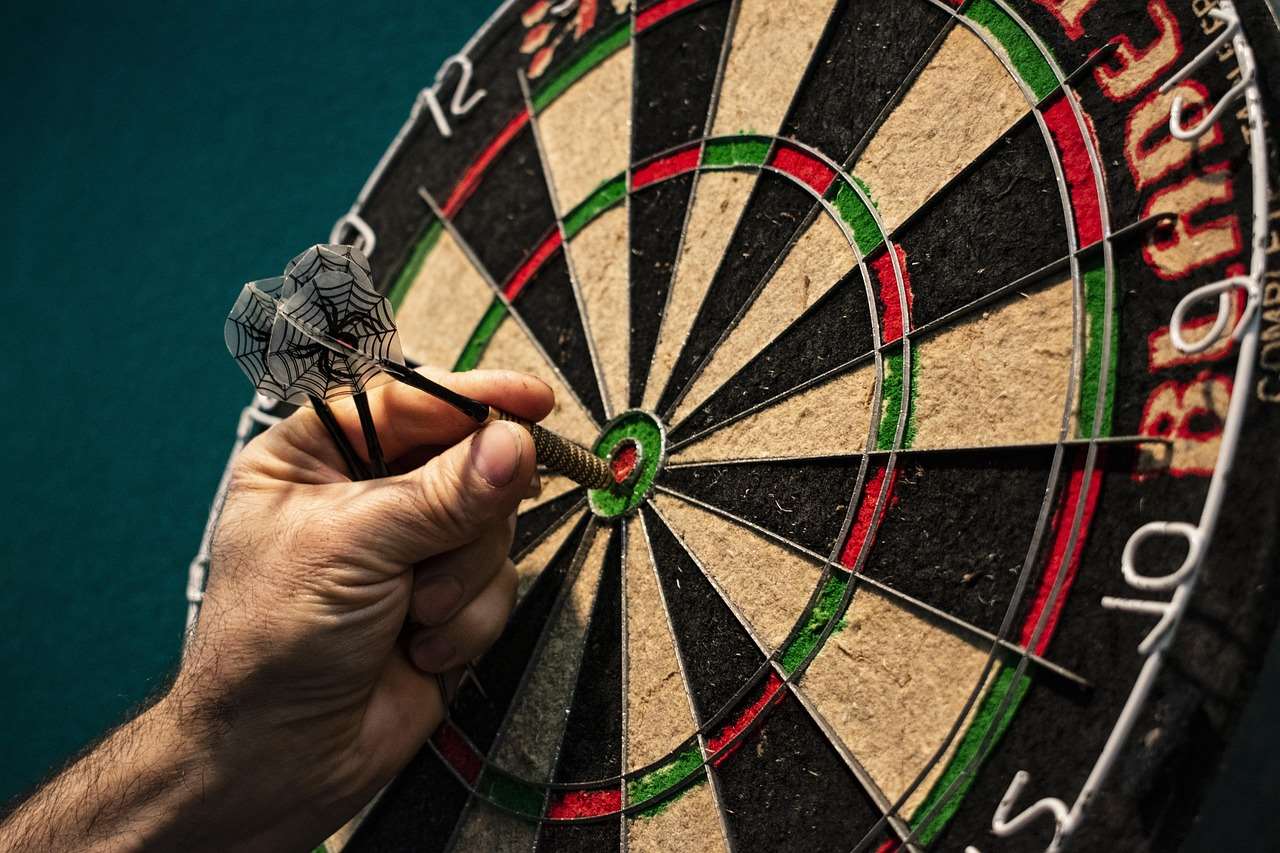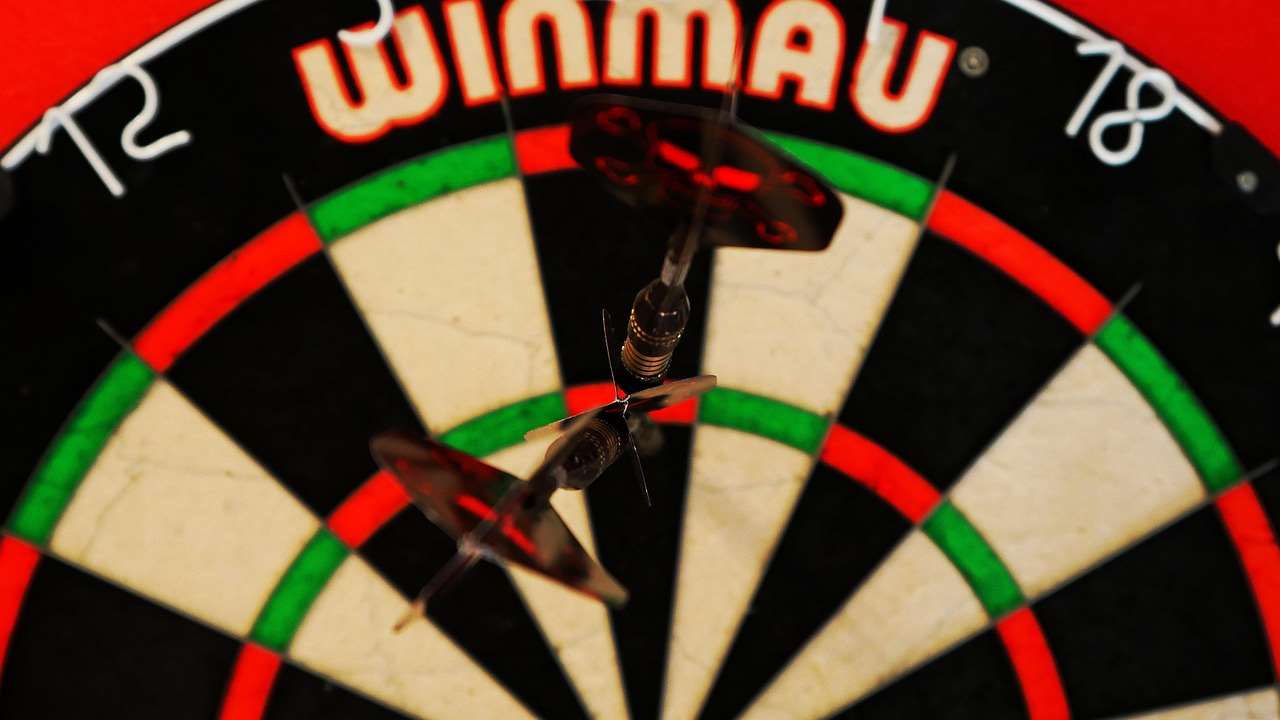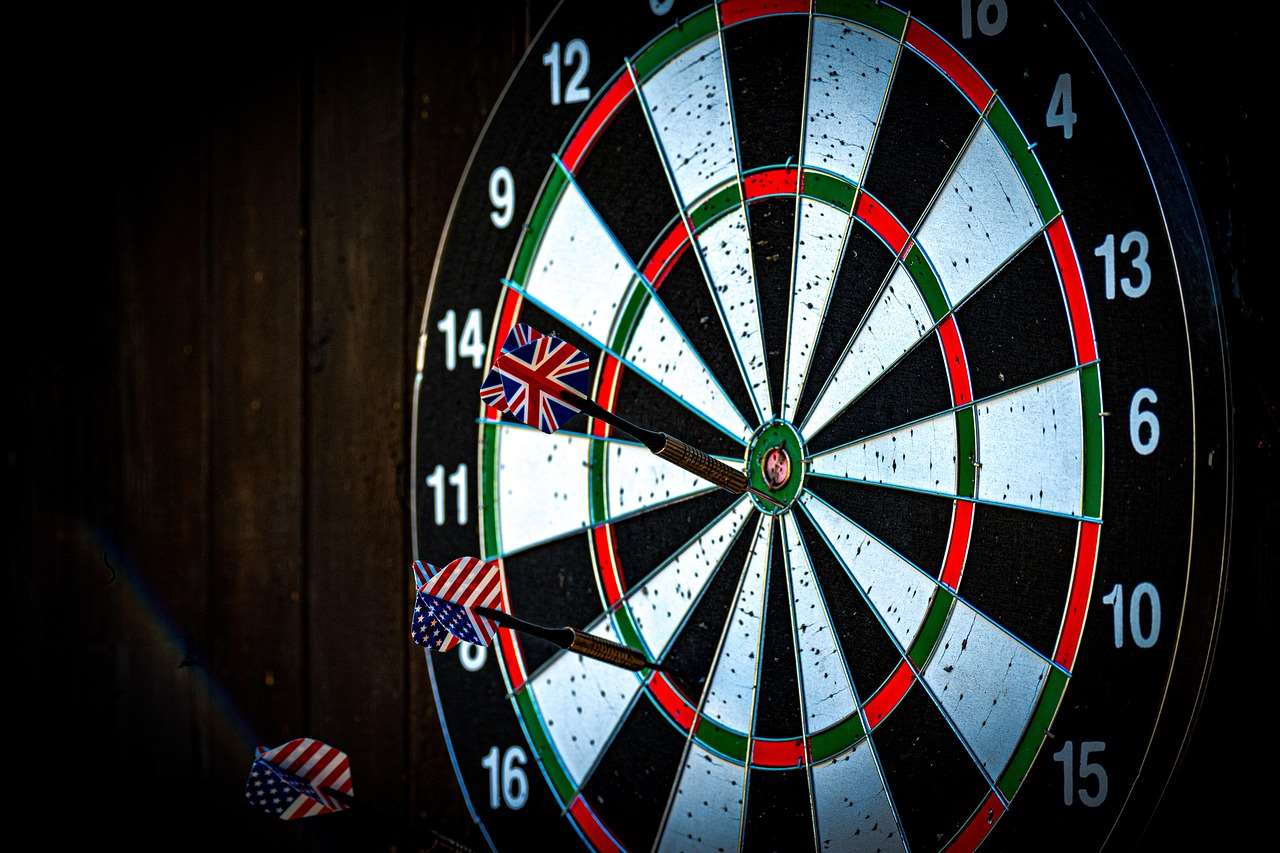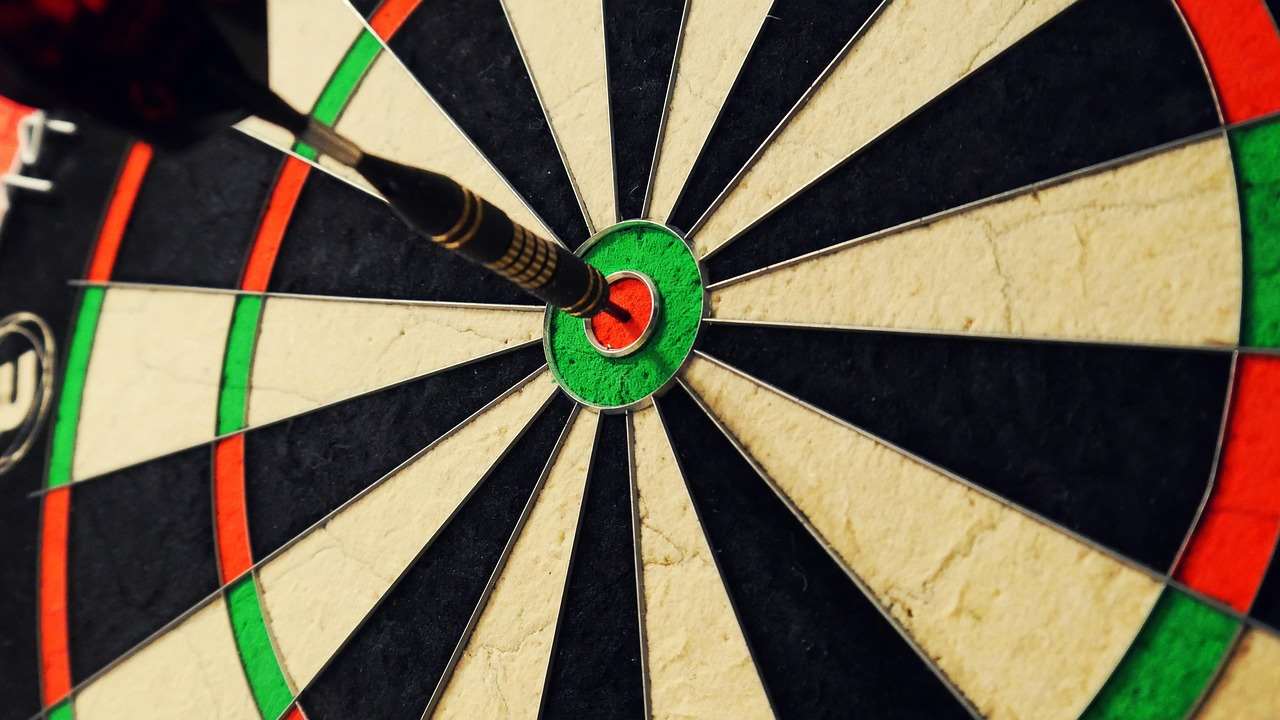The **darts starting score** in a standard game of 501 is, as the name suggests, 501 points; players or teams reduce this score to zero, typically by hitting triples and doubles. This article provides a comprehensive guide to understanding the darts starting score, including variations, checkout strategies, and tips for improving your game.
⚠️ Still Using Pen & Paper (or a Chalkboard)?! ⚠️
Step into the future! The Dart Counter App handles all the scoring, suggests checkouts, and tracks your stats automatically. It's easier than you think!
Try the Smart Dart Counter App FREE!Ready for an upgrade? Click above!
Understanding the Standard Darts Starting Score: 501
The most common format of darts, and the one you’ll see in most professional tournaments, uses a darts starting score of 501. The objective is simple: reduce your score from 501 to exactly zero. However, there are a few crucial rules to keep in mind:
- Each player or team throws three darts per turn.
- The score achieved in each turn is subtracted from the remaining total.
- The final dart thrown to reach zero must be a double or the bullseye (which also counts as a double). This is known as a “double out.”
- If a player goes below zero or scores exactly one point, the score does not count, and the player reverts to the score they had at the start of that turn. This is known as “busting.”
These rules add a layer of strategy to the game. It’s not just about hitting high scores; it’s about planning your checkout to ensure you have a double available when you need it.

Variations in Darts Starting Score
While 501 is the most popular, other variations of darts exist, often using different darts starting scores. These variations are often played to shorten the game or introduce different levels of challenge.
301 Darts
301 is a faster-paced alternative to 501. With a lower **darts starting score**, games are typically shorter. The rules remain the same: you must finish on a double, and busting still applies.
1001 Darts
1001 is less common but sometimes used in team play or longer matches. A higher **darts starting score** means the game will take longer, requiring more endurance and consistent scoring. It can also be seen as a test of how well teams handle pressure over an extended period.
Around the Clock Darts
Around the Clock is more of a practice game than a standard competitive format. Players aim to hit each number on the board in sequence, starting with 1 and ending with 20 (and sometimes the bullseye). There’s no specific **darts starting score** in this game; it’s purely about accuracy.
Strategic Considerations: Planning Your Checkout
Once you understand the darts starting score and the rules, you need to think strategically about how to reduce your score and “checkout.” Checkout numbers are the scores you need to leave yourself so that you can finish the game in one turn with a double. Here are some key considerations:
- Common Checkouts: Familiarize yourself with common checkout combinations. For example, 32 is a popular checkout (Double 16). Others include 40 (Double 20), 36 (Double 18), and 16 (Double 8).
- Leaving a Double: The most important aspect of checkout strategy is ensuring that you leave yourself a double on your final throw. Experienced players often aim to leave scores like 32, 40, or 38, as these allow for a comfortable checkout even if the first dart isn’t perfect.
- Avoiding Busts: Be aware of your remaining score and the potential for busting. Avoid throwing at triples or singles if they could result in a score of one or less.
Practicing common checkout combinations is crucial for improving your darts game. There are many online resources and apps that can help you learn and practice these combinations; for instance, consider using an App to score darts to track your progress and identify areas for improvement.

Darts Scoring System: A Quick Refresher
To effectively reduce your darts starting score, it’s essential to understand the value of each section on the dartboard:
- Single Numbers: The large sections between the wires are worth the number printed on them.
- Doubles: The outer ring doubles the value of the number. Hitting double 20 scores 40 points.
- Triples: The inner ring triples the value of the number. Hitting triple 20 scores 60 points (the highest score possible with one dart). You can find some information about the premier league darts treble twenty package online too.
- Bullseye: The outer bullseye (green section) is worth 25 points.
- Double Bullseye: The inner bullseye (red section) is worth 50 points and counts as a double for checkout purposes.
Accurate scoring is paramount. Familiarize yourself with the layout of the board so that you know where to aim for specific scores. Regularly practice aiming at different targets to improve your accuracy and consistency. If you are wondering about darts where to aim, research optimal strategies online.
Tips for Improving Your Darts Game and Score
Mastering the **darts starting score** and checkout strategy is just the beginning. Here are some practical tips to help you improve your overall darts game:
- Consistent Stance and Grip: Develop a comfortable and repeatable stance and grip. Consistency is key to accuracy.
- Smooth Throwing Motion: Focus on a smooth, controlled throwing motion. Avoid jerky movements or excessive force.
- Practice Regularly: Like any skill, darts requires regular practice. Dedicate time each week to hone your skills.
- Analyze Your Game: Pay attention to your strengths and weaknesses. Identify areas where you struggle and focus on improving them.
- Use the Right Equipment: Choose darts and a dartboard that suit your style and preferences. Experiment with different weights, shapes, and materials to find what works best for you. It may be time to look at shaft dartpijl replacements.
- Mental Game: Darts is as much a mental game as it is a physical one. Stay focused, positive, and avoid getting discouraged by bad throws.

Common Mistakes to Avoid When Aiming for Zero from a Specific Darts Starting Score
Even experienced players make mistakes. Here are some common pitfalls to avoid when trying to reduce your **darts starting score** to zero:
- Rushing Your Throws: Take your time and focus on each throw. Rushing can lead to errors.
- Ignoring the Double Out Rule: Always be mindful of the double out rule and plan your throws accordingly.
- Chasing High Scores: Don’t focus solely on hitting triples. Sometimes, a strategic single or double is a better option.
- Tilting: Don’t get too discouraged after one bad throw. Maintain composure and focus on the next dart.
By avoiding these common mistakes and focusing on consistent practice, you can significantly improve your chances of winning at darts.
Advanced Checkout Strategies
Beyond the basic checkout combinations, there are more advanced strategies that can give you an edge over your opponents. These often involve complex calculations and precise aiming.
- Two-Dart Checkouts: Some experienced players aim to leave themselves a two-dart checkout whenever possible. This requires careful planning and accurate scoring.
- Setting Up the Score: Sometimes, it’s more advantageous to set up a favorable score for your next turn rather than attempting a risky checkout.
- Knowing Your Opponent: Pay attention to your opponent’s strengths and weaknesses. This can influence your checkout strategy.

Choosing the Right Dartboard and Darts
Your equipment can have a significant impact on your performance. When it comes to understanding the darts starting score, having quality equipment will make the learning process a lot smoother.
Dartboards
Bristle dartboards are the standard for professional play. Look for a dartboard made from high-quality sisal fibers, as these tend to last longer and provide better dart retention. Regularly rotating your dartboard can extend its lifespan. Consider looking into dart board wire replacement if you have an older board.
Darts
Darts come in a variety of weights, shapes, and materials. Experiment with different types to find what feels most comfortable and provides the best accuracy for you. Consider the weight, grip, and balance of the darts. A slightly heavier dart may be a good choice.

The Importance of Practice and Mental Fortitude
Ultimately, consistent practice and mental fortitude are key to mastering darts. Remember these crucial aspects as you’re trying to get better at hitting the correct **darts starting score**:
- Set Realistic Goals: Don’t expect to become a professional overnight. Set achievable goals and celebrate your progress along the way.
- Stay Positive: Darts can be frustrating at times. Stay positive and don’t let setbacks discourage you.
- Find a Practice Routine: Establish a regular practice routine and stick to it. Even short, consistent practice sessions can make a big difference.
- Learn from Your Mistakes: Analyze your games and identify areas where you can improve. Don’t be afraid to experiment with different techniques and strategies.
Conclusion
Understanding the **darts starting score**, the rules of the game, and checkout strategies is fundamental to playing darts effectively. Whether you’re playing a casual game with friends or competing in a tournament, mastering these concepts will significantly improve your performance. Remember to practice regularly, stay focused, and enjoy the challenge. Take what you’ve learned here and start practicing today! With dedication and consistent effort, you can transform your darts game. Now that you have a solid understanding, why not start tracking your scores using a darts scoring app and see how much you improve over time?
Hi, I’m Dieter, and I created Dartcounter (Dartcounterapp.com). My motivation wasn’t being a darts expert – quite the opposite! When I first started playing, I loved the game but found keeping accurate scores and tracking stats difficult and distracting.
I figured I couldn’t be the only one struggling with this. So, I decided to build a solution: an easy-to-use application that everyone, no matter their experience level, could use to manage scoring effortlessly.
My goal for Dartcounter was simple: let the app handle the numbers – the scoring, the averages, the stats, even checkout suggestions – so players could focus purely on their throw and enjoying the game. It began as a way to solve my own beginner’s problem, and I’m thrilled it has grown into a helpful tool for the wider darts community.